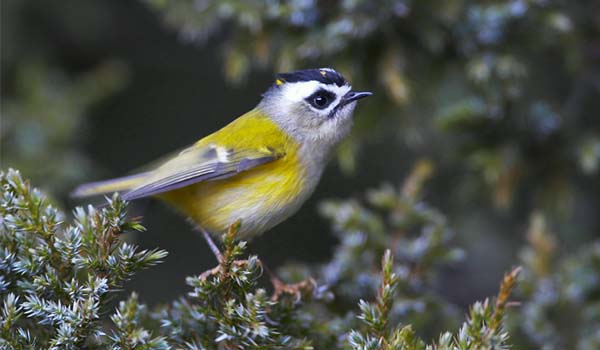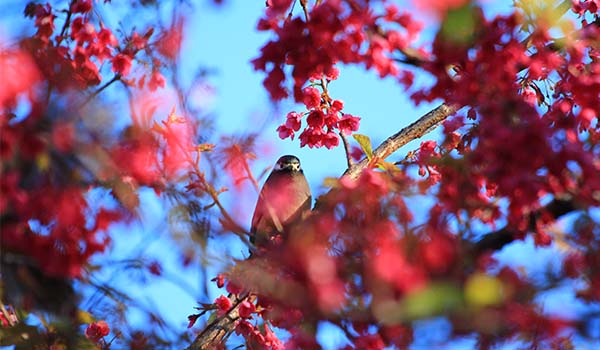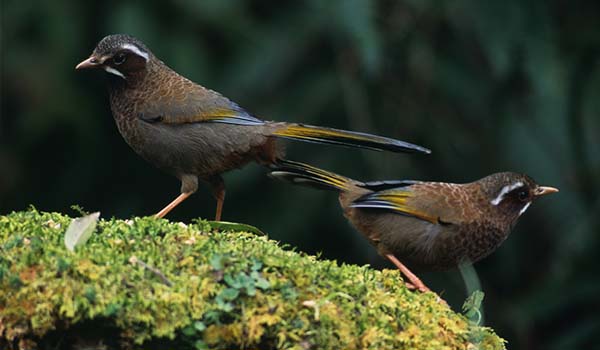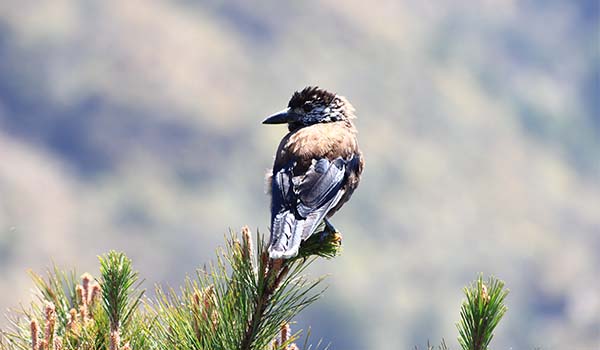The northwest part of Yushan National Park covers Dongpu Village, Xinyi Township, at an elevation of 1,100 meters, to the main peak of Mt. Jade, at an elevation of 3,952 meters. It has a subtropical to frigid ecosystem and breeds rich and diverse planted forests and biological resources. At least 48 species of mammals, 135 species of birds, 13 species of amphibians, 239 species of butterflies, and 147 species of insects have been found. The park has also become a scientific research base for its rich natural resources.
Plants
The northwest area, from places in the lower altitude to places in the higher altitude, has broadleaf forest, temperate broadleaf, and mixed forests, spruce forest, hemlock forest, fir forest, shrubs formed by Yushan junipers and Rhododendron and alpine belt:
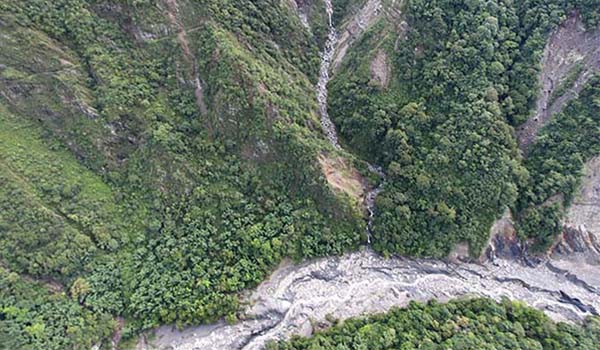
Evergreen broadleaf forest
Evergreen broadleaf forest: Under the elevation of 1,800 meters
Guanfeng on Provincial Highway 21, Batongguan Traversing Trail between Dongpu and Lele are located in the subtropical forest under an elevation of 1,800 meters. This area is humid and warm, with plenty of rainfall and lush forests. The plants in this area are dominated by evergreen broadleaf trees, mostly cinnamomum camphora and glandulifera in the beech family. The forests have layers of regular trees, shrubs and herbs. Red nanmu, ring-cupped oak, cinnamomum insulari-montanum, large-leaved nanmu, Chinese guger-tree, India-charcoal trema, Formosanum elderberry are commonly seen in the area.
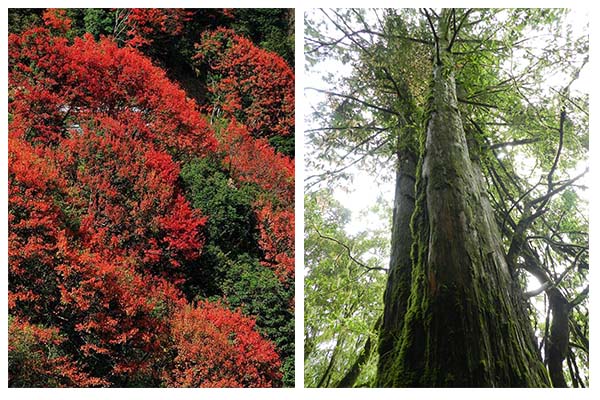
Cypress forest
Cypress forest: At an elevation of 1,800 to 2,400 meters
Guanshan on Provincial Highway 21, Fuci Tree, Batongguan Traversing Trail between Lele and Guangao, and the upstream of Shalixian Creek are located in the temperate forest between the elevation of 1,800 and 2,500 meters. Clouds and fog are common throughout the year. The forest is extremely humid, so it is often referred to as a "fog forest zone,” and a transition zone for coniferous and broadleaf trees. Reddening Maple, trochodendron aralioides, Taiwan red cypress, Yellow Cedar, Taiwania cryptomerioides Hayata, their air plants and ferns and mosses are commonly seen in the area. 。
Hemlock and spruce forests: At an elevation of 2,400 to 3,000 meters
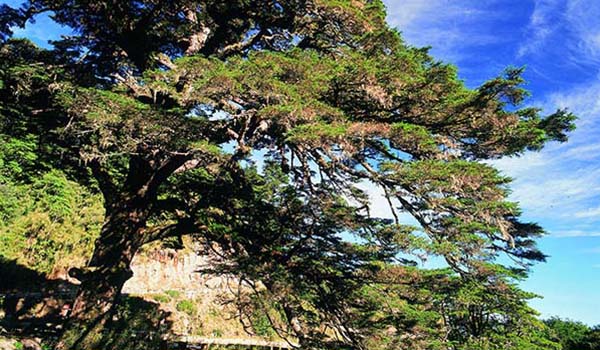
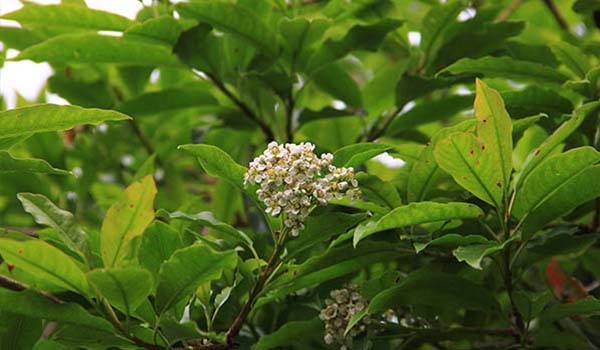
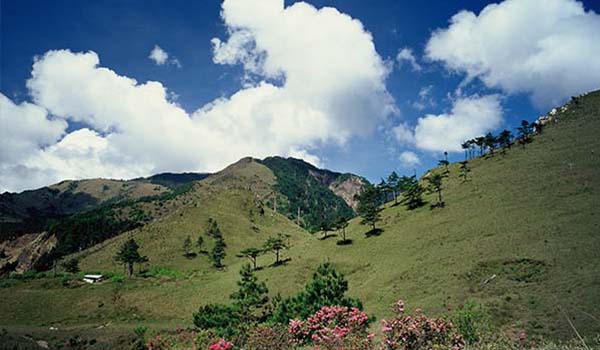
Tataka Recreation Area, Batongguan Traversing Trail and Guangao, and the trail between Tataka and the west peak of Mt. Jade is located in the cold-temperate coniferous forests at an elevation of 2,500 and 3,000 meters. The area has mostly Taiwanese hemlock and spruce trees. The part affected by fires in the early days has Armand pines, Taiwan red pines, Formosan alder, Taiwan stranvaesia, red rhododendron, schefflera taiwaniana, Japanese knotweed, evergreen eulalia, and others.
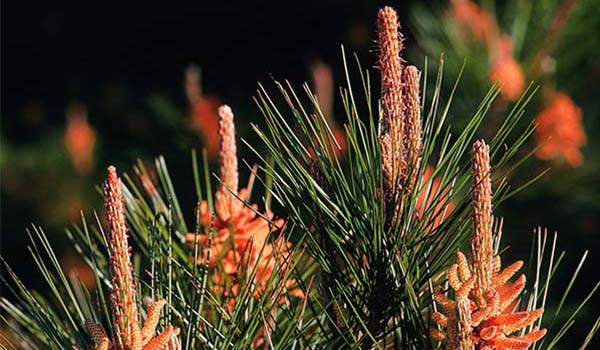
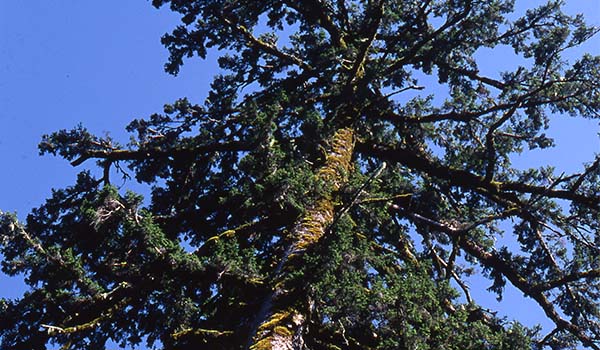
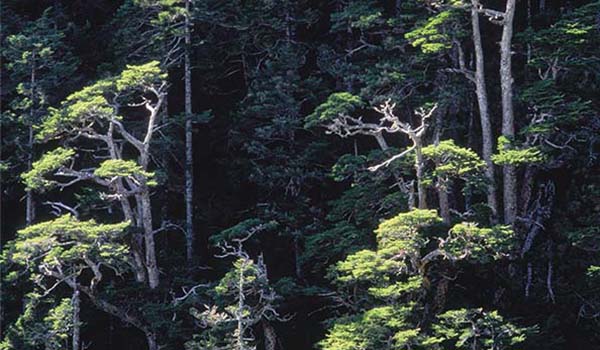
Fir forest: 3,000 to 3,600 meters.
From Daciaobi (The Great Precipice) to the main peak - Subarctic coniferous forests located between Yuan Peak crossroad and the area near Laonong River Campground at an elevation of 3,000 to 3,600 meters. Taiwan fir is the main tree species. Fir trees have straight trunks and an elegant look. The underbrush has mostly Yushan cane. Yushan rhododendron, gaultheria itoana, Sorbus randaiensis, adenophora morrisonensis, gentiana scabrida, sedum morrisonense, Mount Yushan pearleverlasting and senecio nemorensis are also common in the area.
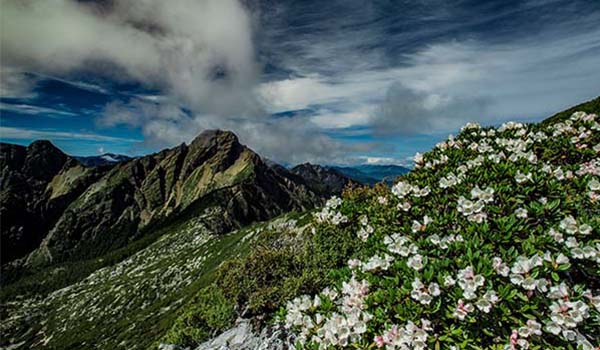
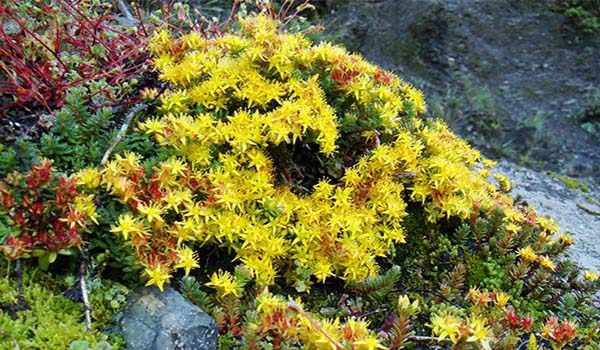
Subalpine shrubs: 3,600to 3,850 meters
Main peak - Boreal forest located between Yuan Peak crossroad and the trail near the main peak at an elevation of 3,600 to 3,850 meters. The environment in the area is harsh, with big day-night temperature fluctuations, strong ultraviolet rays, and a dry climate. There are a lot of exposed rocks, strong winds, and heavy snow. Plants grow slowly and are not rather short. Yushan junipers and rhododendron, Yushan barberry, anaphalis nepalensis, and erigeron morrisonensis are common in the area.
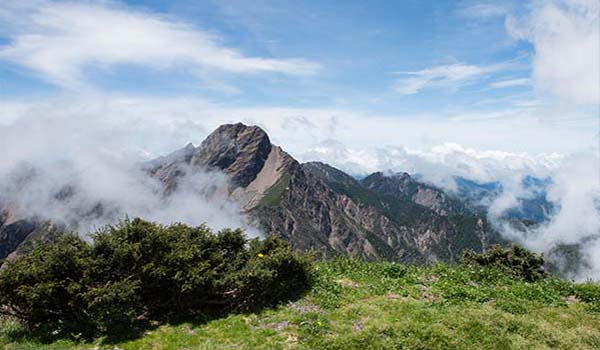
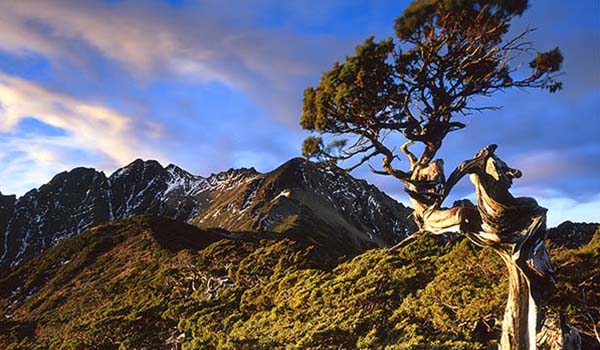
Alpine herb belt: 3,850 to 3,952 meters
Plants are dominated by herb communities at an elevation of 3,850 to 3,952 meters. Often in massive clusters, there are some scattered alpine shrubs, and mosses and lichens can be seen on exposed rocks. Due to the harsh environmental conditions, plants usually have densely hairy or waxy leaves or even thick or recurved leaves, and the main roots are well-developed and deep. Brachypodium kawakamii, sheep's fescue, trichophorum subcapitata, hylotelephium subcapitatum, Taiwan edelweiss, and Taiwan ladybell are common in the area.
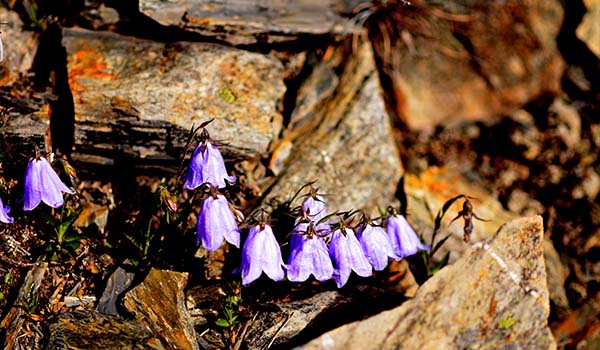
Animals
Mammals
The rich and diverse plant belts in the northwest area of the park have given birth to a wide variety of wild animals. There are at least 48 species of mammals and bats. Common species such as Formosan serow, Formosan sambar deer, Reeves's muntjac, yellow-throated marten, wild boars, Formosan rock macaque and other medium- and large-sized mammals are common in the area. Small mammals such as Formosan white-headed flying squirrel, Formosan giant red flying squirrel, Coxing's white-bellied rat, Oldfield white-bellied rat add more diversity to the alpine ecosystem. There are at least 17 species of bats along the Nanxi forest trail. Formosan black bear, a Level 1 endangered species, is also in the area.
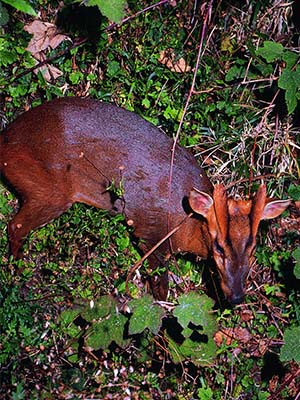
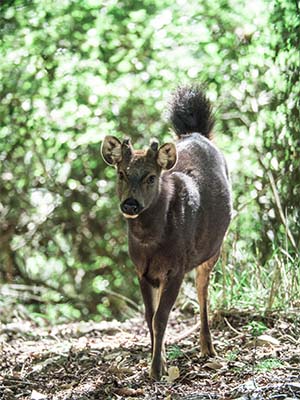
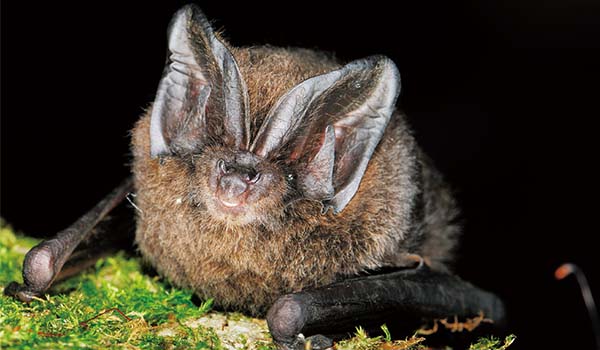
There are at least 6 species of reptiles in the northwest part of the park. The common ones are trimeresurus gracilis, beauty rat snake, sphenomorphus taiwanensis, and swinhoe's japalure.
The northwest area of Yushan National Park is within the coverage of Jhuoshuei River basin. Hemimyzon formosanus is common in the upstream Chenyoulan Creek.
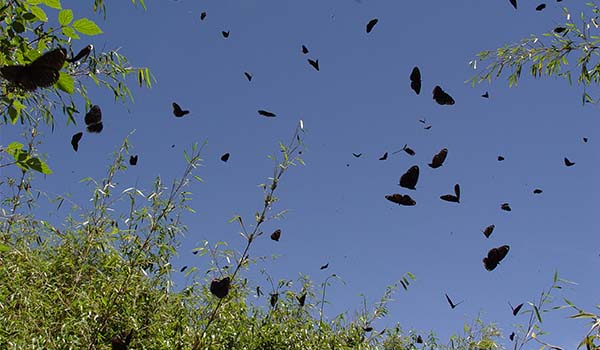
There are about 239 species of butterflies in the northwest part of the park. The Tataka Anbu (Saddle of Tataka) is an important location for the migration or inhabitation of butterflies on the island. The common ones are snout butterflies, yellow-legged tortoiseshell, Aporia agathon moltrechti, euploea sylvester swinhoei, byasa polyeuctes termessus, zophoessa niitakana and celastrina oreas arisana. Aegus laevicollis formosae Bates, Neolucanus swinhoei, and Dorcus miwai are other insects common in the area. The Tataka Anbu (Saddle of Tataka) and the trail between Dongpu and Batongguan have complete terrain and vegetation, and they become the landscape worthy of butterfly appreciation and research in spring and summer.
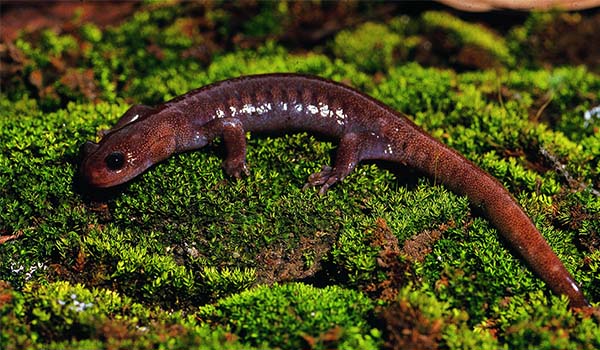
The two most famous amphibians in the northwest area are hynobius arisanensis and hynobius sonani, of which hynobius arisanensis is a rare species. The area is considered the world's southernmost place in terms of the distribution of cryptobranchoidea. As for the part of Donpu where the elevation is lower, there are bufo bankorensis, zhangixalus moltrechti, buergeria robusta, Japanese Buerger's frog and odorrana swinhoana.
Birds
Yushan National Park has recorded a total of 233 species of birds in the entire park, and there are 135 species in the northwest area. The common ones are Mikado pheasant, Swinhoe's pheasant, Taiwan partridge, bronzed drongo, Taiwan yuhina, grey-cheeked fulvetta, white-eared sibia, steere's liocichla, rufous-faced warbler, spotted nutcracker, collared bush robin and white-whiskered laughingthrush.
